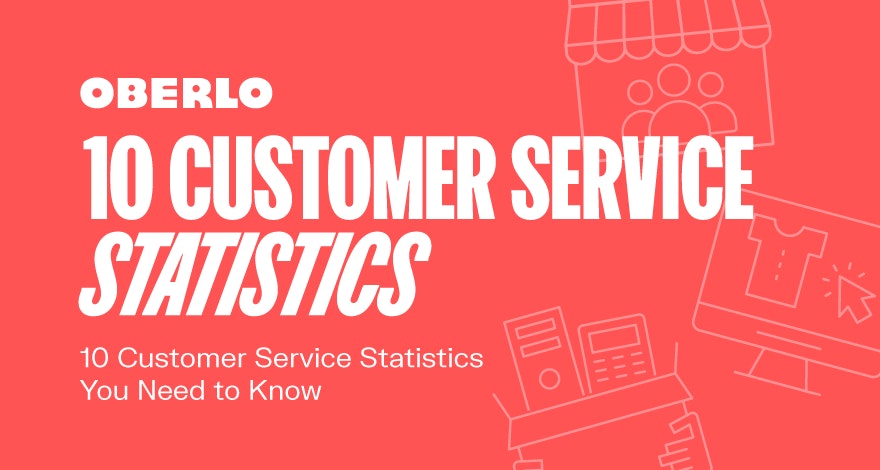After spending all that time and effort sourcing for the perfect dropshipping product to sell and setting up your business, your online marketing strategy is finally in place and the first sales are starting to come in.
But before you lay back and relax, there’s one key area of your business that you still need to tackle: customer service. In this article, we’ll present to you ten customer service statistics all entrepreneurs must know when setting up their company’s customer service.
Post Contents
- What is Customer Service?
- 1. Customer Service Statistics: Contact Frequency
- 2. Customer Service Influences Purchase Decisions
- 3. Brand Loyalty Depends on Customer Service
- 4. Importance of Human Touch
- 5. Cost of Poor Customer Service
- 6. The Worst Aspect of Poor Customer Service
- 7. The Best Aspect of Good Customer Service
- 8. Poor Customer Service Experiences Are Shared
- 9. Phones As Medium of Choice For Customer Support
- 10. Consumers Will Pay More for Good Customer Service
- Conclusion
- Summary: Customer Service Statistics
- Want to Learn More?



What is Customer Service?
Before diving into the customer service statistics, we must first understand what customer service is.
In a nutshell, customer service is providing assistance and help to consumers before and after they carry out a purchase. This means it applies to prospective customers who are thinking about purchasing a product or service from you and customers who have already bought from you.
→ Click Here to Launch Your Online Business with Shopify
Why is Customer Service Important?
Good customer service is important to growing your dropshipping business. As the following customer service statistics will show, the importance of customer service as not only part of your brand image, but also marketing and sales efforts, cannot be ignored.
The interconnectedness of it all means that one single poor customer service experience can result in loss of brand loyalty, customers, and ultimately, sales.
So if you’re ready, buckle up and let’s dive straight into the ten customer service statistics you need to know in 2023!
1. The Global Customer Experience Management Market Size
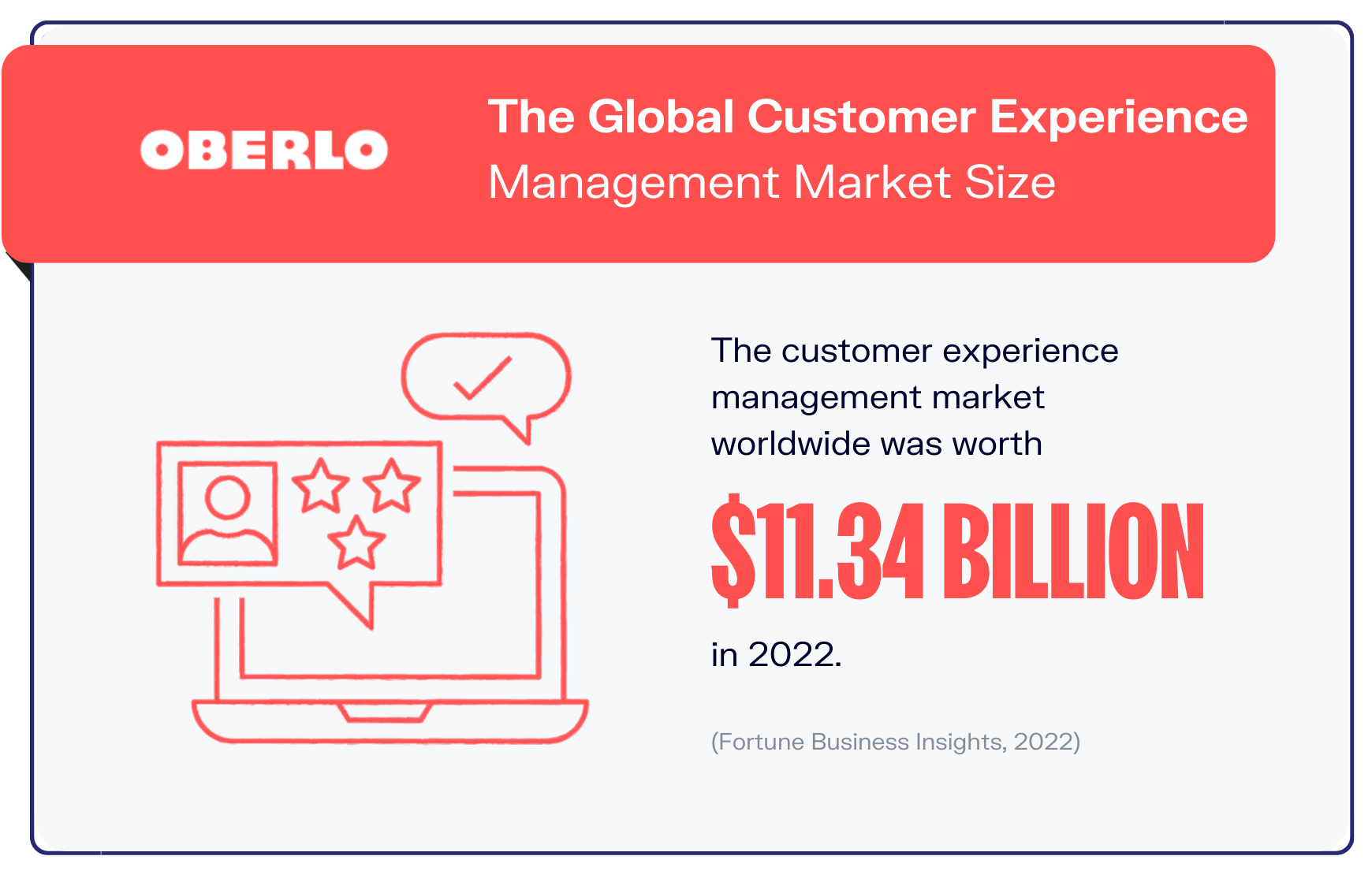
To start, let’s have a look at just how big the customer experience market is.
According to a report by Fortune Business Insights, the customer experience management market worldwide was worth as much as $11.34 billion in 2022 (Fortune Business Insights, 2022). This was a 12.2 percent year-over-year increase from its value of $10.11 billion in 2021 and is expected to increase to $32.53 billion by 2029.
Over the coming years, the market is not only set to continue growing but also sustain this impressive growth rate. Its compound annual growth rate (CAGR) is expected at 16.2 percent from 2022 to 2029.
This growth is driven by the rising number of businesses adopting artificial intelligence and augmented reality to improve the customer experience for their buyers. Recognizing the importance of providing good customer service for customer retention and company presence, brands are starting to invest more in the tools and technologies that can help them grow.
2. Customer Service Influences Purchase Decisions
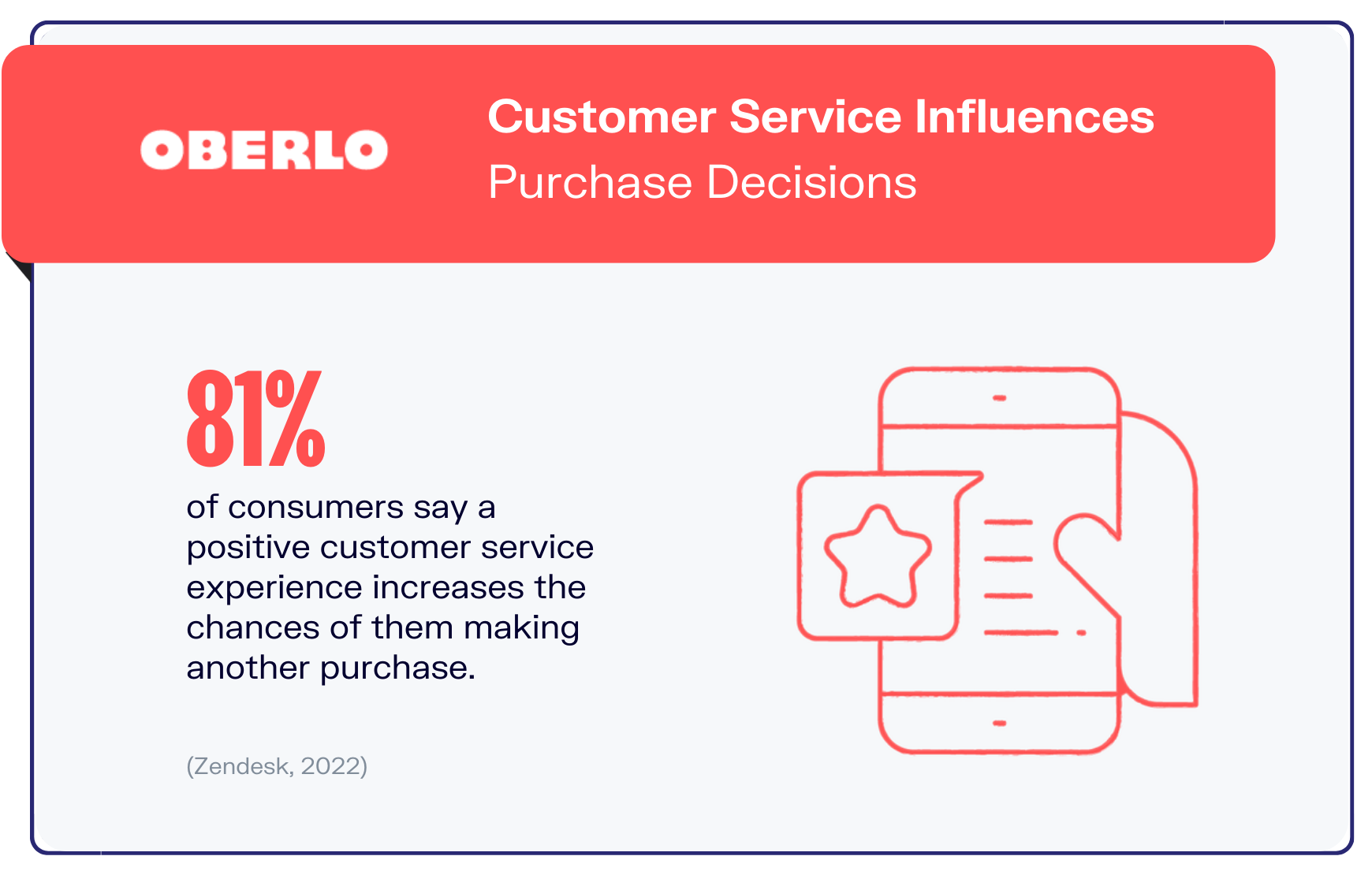
If you think customer service is only aimed at solving problems for new customers, here’s a statistic that proves otherwise: 81 percent of consumers say a positive customer service experience increases the chances of them making another purchase (Zendesk, 2022).
That means that providing good customer service extends from the prospecting stage before consumers even make a purchase to way beyond it. It’s also influential enough to deter buyers from or incentivize them to continue purchasing from you.
In fact, the majority of consumers today view customer service to be one of the top factors that influence their purchasing decisions. 70 percent of them have decided to buy from a brand based on the quality of their customer service, and as many as 78 percent would switch to a competitor after multiple bad experiences.
3. Brand Loyalty Depends on Customer Service
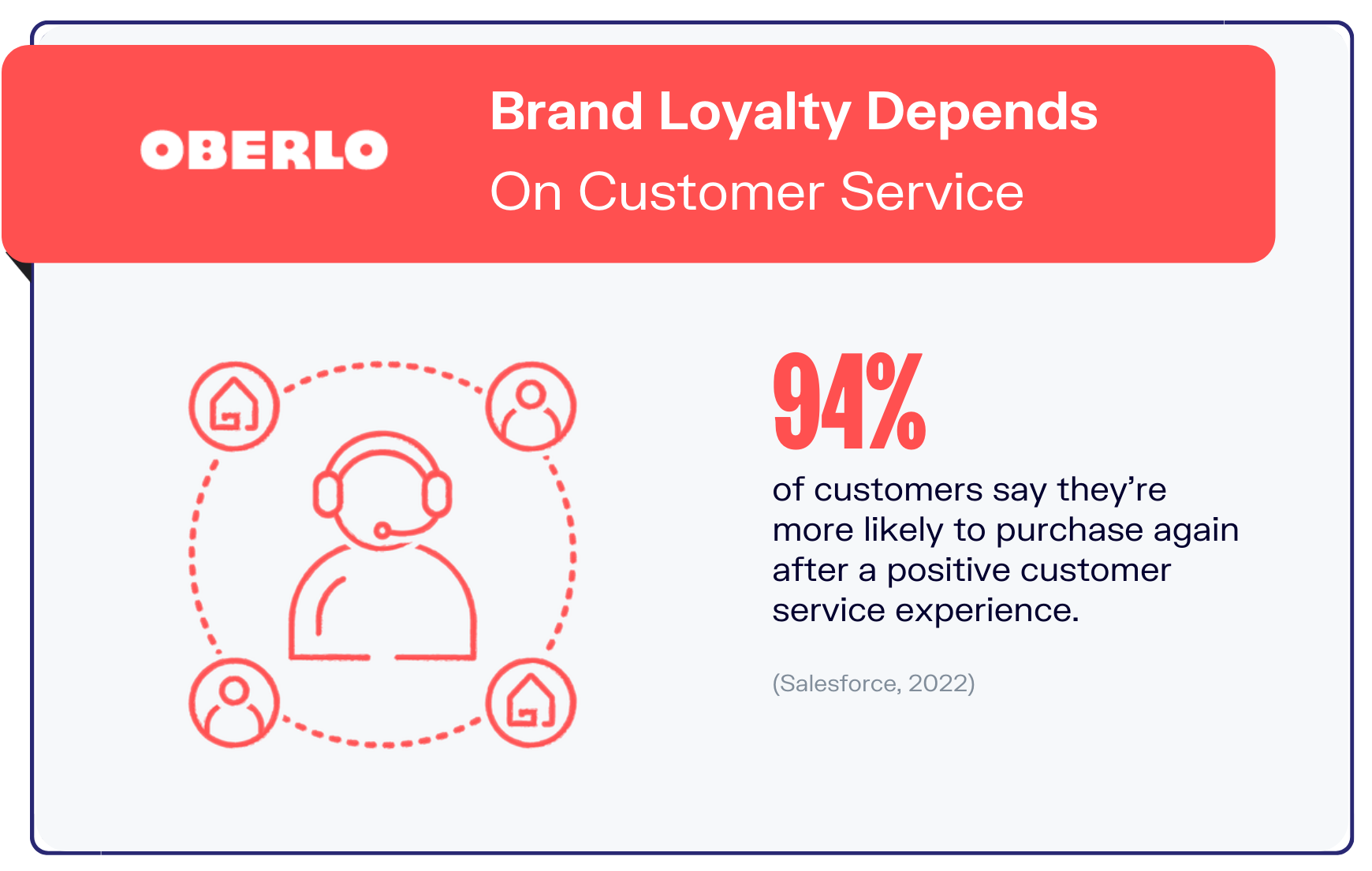
As you set up your brand’s customer service, remember the following: good customer service should continue even after the purchase has been carried out.
Providing good customer service helps to build customers’ trust in your brand. As this next statistic will show, it is an added incentive for customers to return and key to increasing your customer’s lifetime value.
A whopping 94 percent of consumers say that a positive customer service experience encourages them to continue buying from the same brand (Salesforce, 2022). This is so much so that 80 percent of consumers say they’re willing to forgive mistakes made by a company if they received excellent customer service.
Since customer retention is generally cheaper than customer acquisition, you may want to consider building top-notch customer service to entice your existing customer pool and keep them coming back.
4. Importance of Human Touch
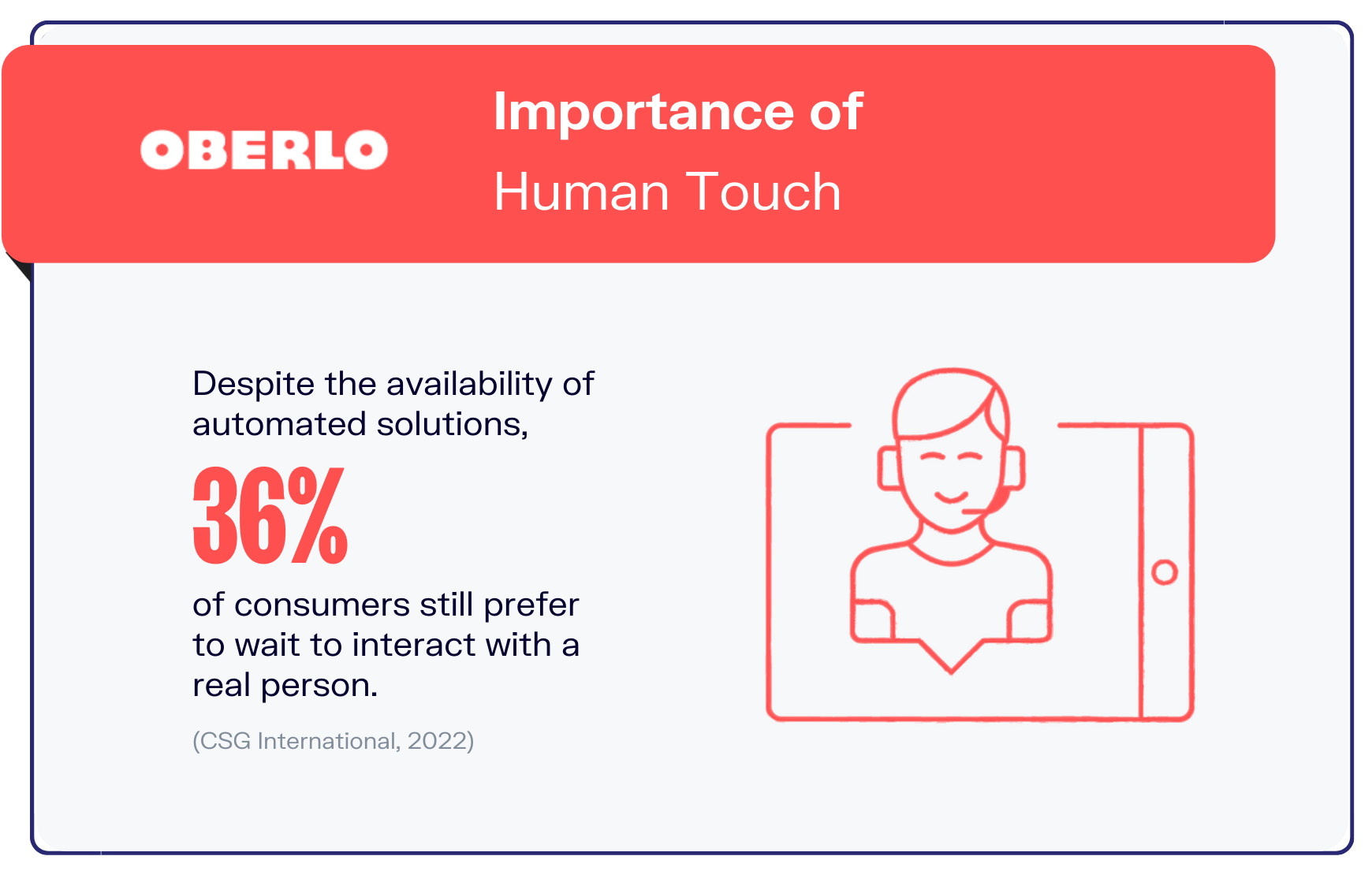
Despite the digital age in which we currently live, there remains a significant number of consumers who prefer human interactions when it comes to dealing with customer service.
According to a study, 36 percent of consumers prefer to wait to interact with a real human representative when seeking customer service (CSG International, 2022). This is in spite of the availability of automated solutions like AI-powered virtual assistants. In fact, 83 percent of those who contact a company say they expect to interact with someone immediately.
So while advances in automation and technology are there for businesses to use, there should also be human representatives available to resolve customer service problems when needed. Not providing such an option can lead to frustration, which, as we’ll explore in the next customer service statistic, can be costly for businesses.
5. Cost of Poor Customer Service
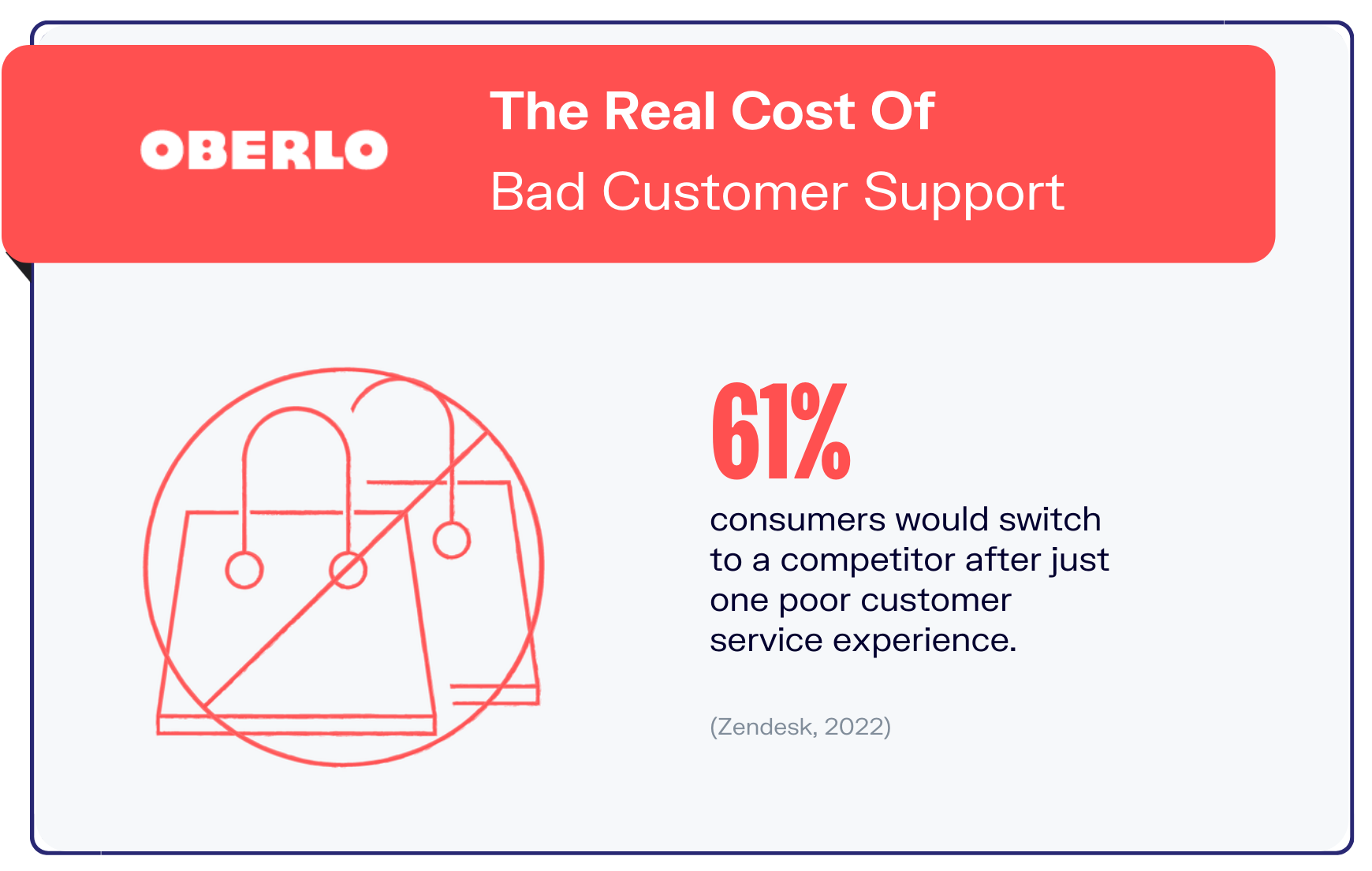
If the question, “Why is customer service important?” has ever crossed your mind as an ecommerce entrepreneur, then the following customer service statistic is one you should pay particular attention to.
Where baseball lives by the mantra “three strikes and you’re out,” customer service is a little less forgiving. More than six out of ten consumers say they will stop buying from a company and switch to a competitor after just one poor customer service experience (Zendesk, 2022).
This reiterates the importance of customer service to the overall experience your brand offers your customers, who have no qualms about switching loyalties after just one bad experience.
6. The Worst Aspect of Poor Customer Service
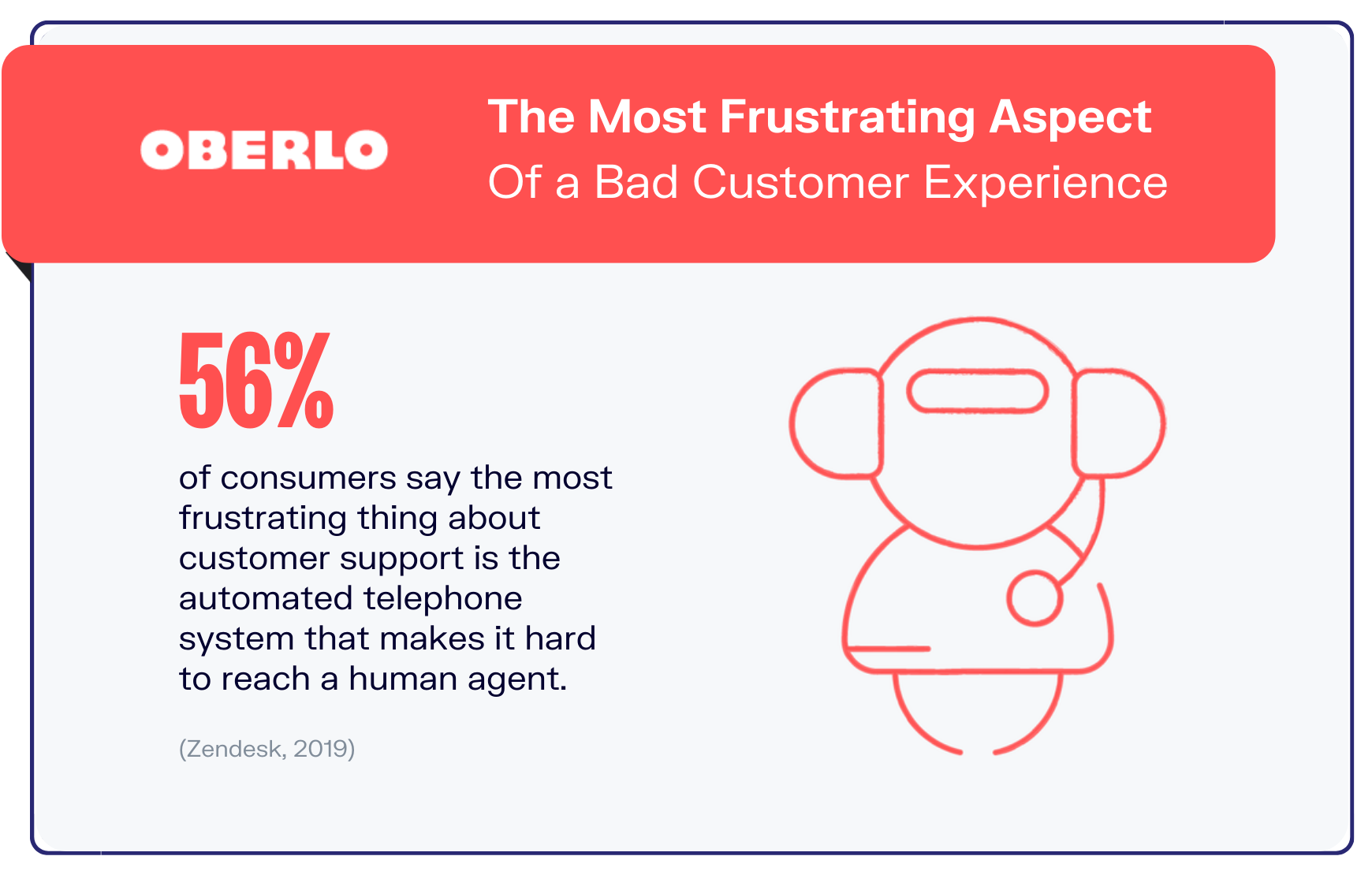
If you’re adopting the automated options available on the market, here’s perhaps one of the most important customer service statistics to be aware of when doing so – automated telephone systems are the bane of all customer service experiences, with more than half (56 percent) of all consumers listing it as the most frustrating part of any poor customer service experience (Zendesk, 2019).
In large part, their frustration at these automated systems stems from the difficulty they face in getting in touch with a human agent, which, as we’ve seen from a previous point, remains extremely important in the eyes of consumers.
Aside from automated telephone systems, the most disliked aspects of customer service include only being able to reach customer support at certain hours and having to repeat the same information multiple times. In fact, a survey by HubSpot shows that consumers loathe the latter so much that 62 percent of them would prefer to “hand out parking tickets.”
7. The Best Aspect of Good Customer Service
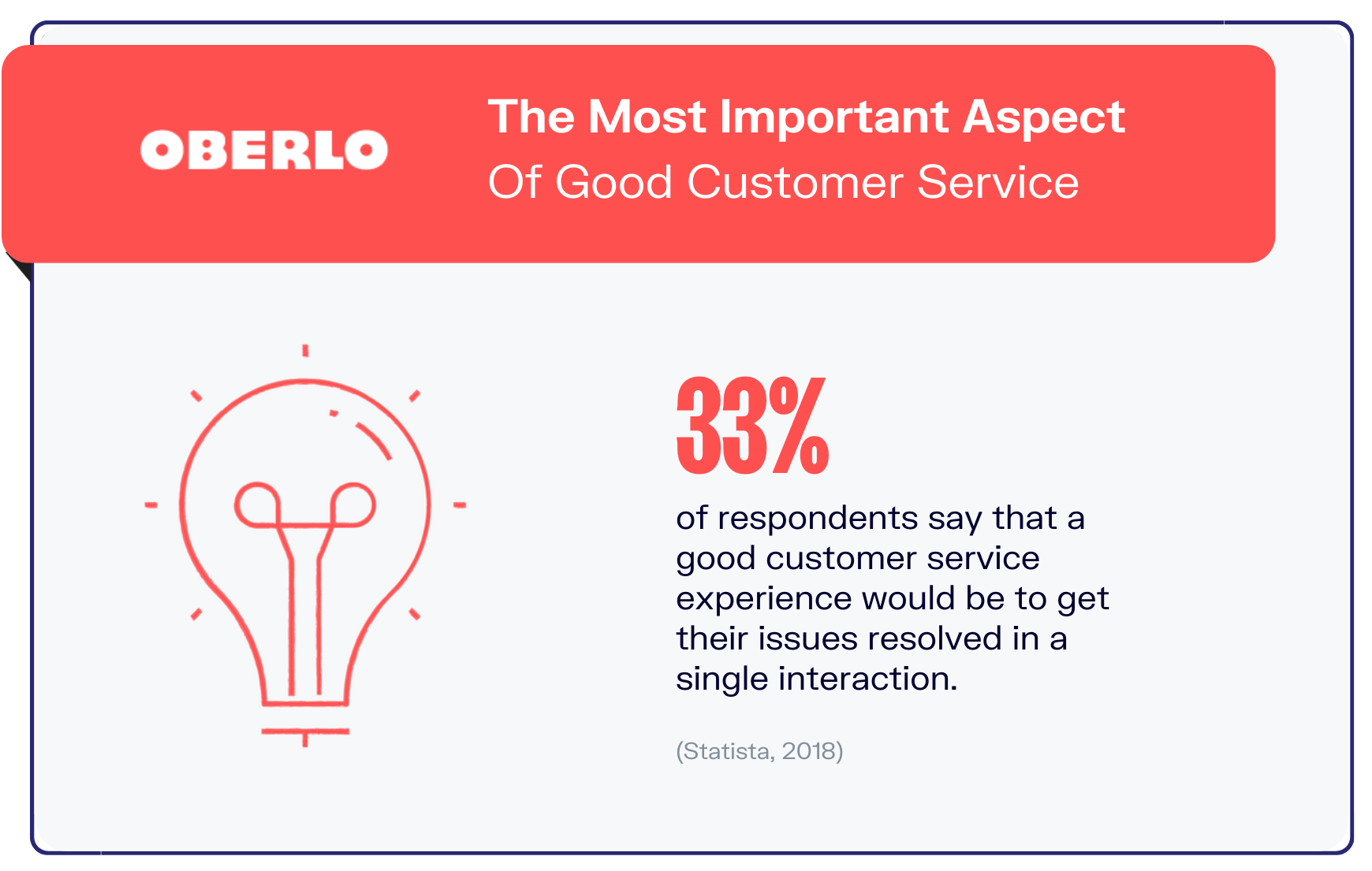
This next customer service statistic shows that when it comes to solving problems, time is of the essence.
One-third of all consumers consider the most important aspect of good customer service experiences to be being able to get their problem solved in one single sitting regardless of the amount of time spent (Statista, 2019).
This is an indication that consumers generally prefer to have whatever issue they’re facing resolved on the spot rather than having to get in touch again at a later time.
And it even beats out dealing with knowledgeable customer service representatives, which relatively fewer (31 percent) global consumers say is the most important aspect of a good customer service experience.
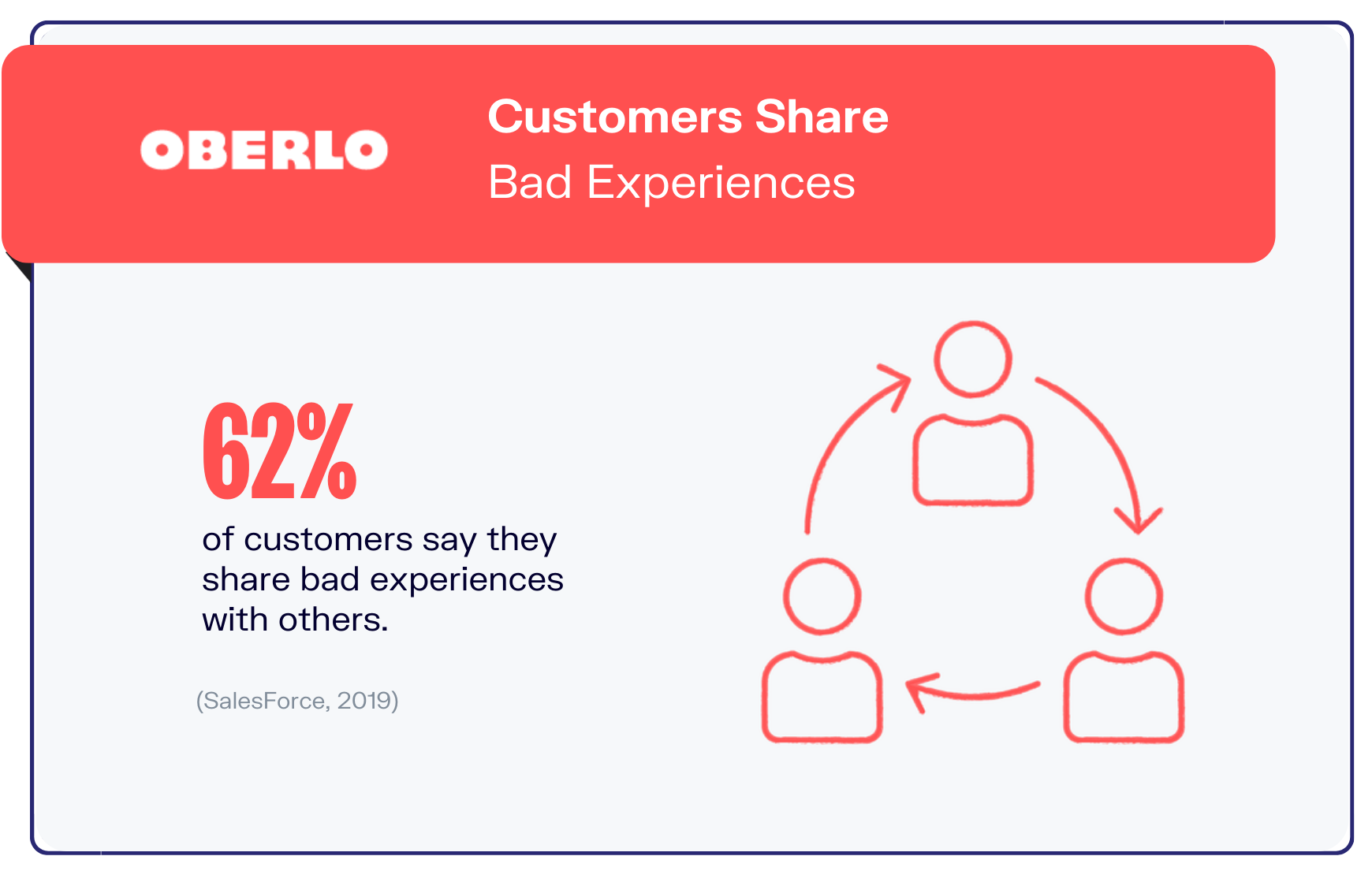
And you’ll want to work hard to avoid even one single poor customer service experience or risk having it amplified and hurting your brand.
Word-of-mouth marketing is a double-edged sword. It doesn’t only have the potential to boost marketing and drive sales, it also has the capability to do the exact opposite, especially if it results from a poor customer service experience; a report shows that six out of every ten consumers share bad experiences with others (Salesforce, 2018).
And as an added incentive to invest more time and energy into customer service, the same report shows that 72 percent of customers say they share good experiences with others. So do your customer service well and you’ll be getting a good reputation boost simply by word of mouth.
9. Phones As Medium of Choice For Customer Support
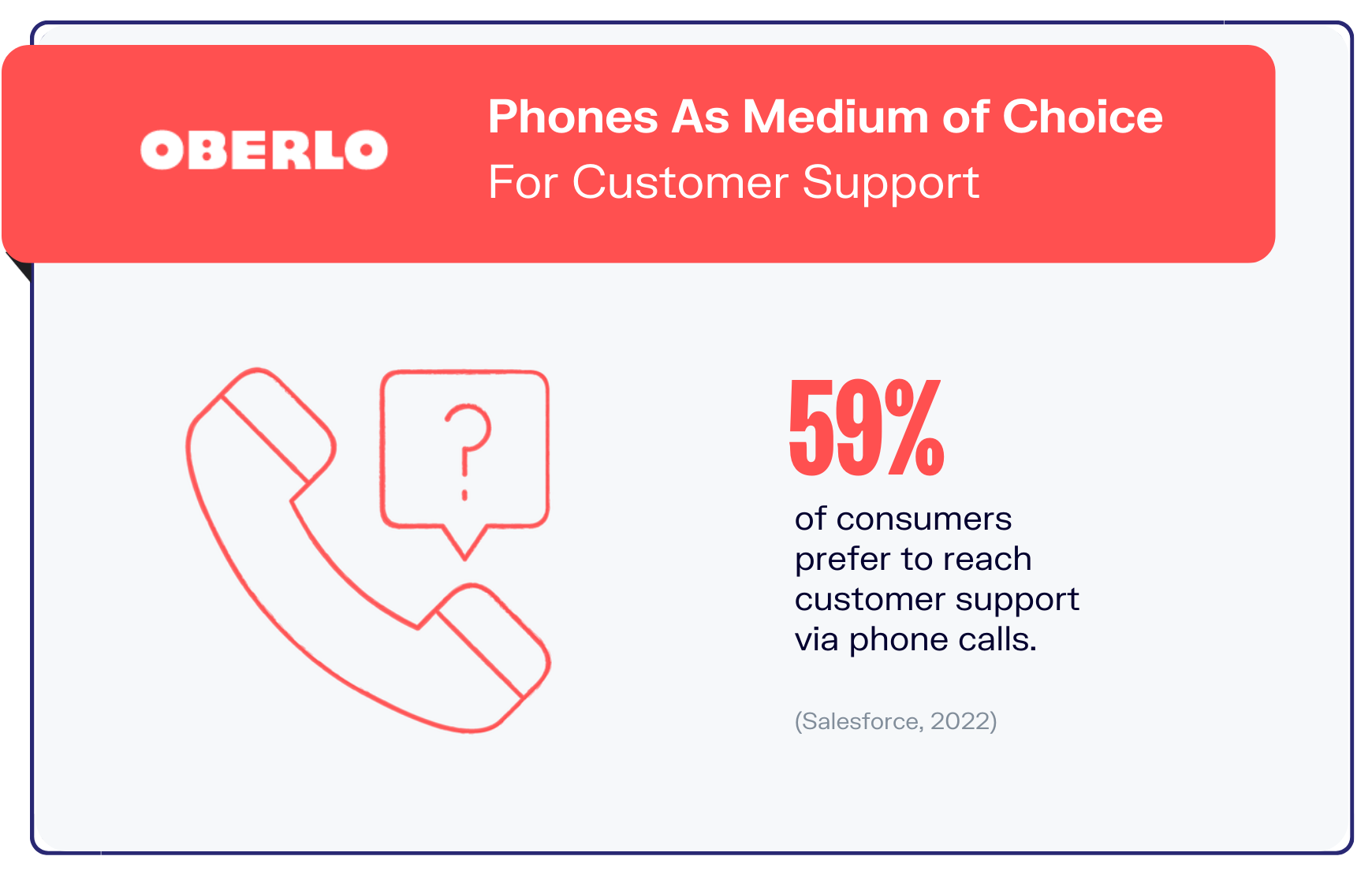
Most people today prefer to send a text, email, or interact through social media when it comes to communicating with family and friends. But if there’s one sector in which this trend has yet to take hold, it’s customer service.
An annual study on buyer behavior shows that as of 2022, nearly three out of five (59 percent) consumers prefer the traditional medium of phone calls to reach customer support representatives (Salesforce, 2022). This makes phones their channel of choice, followed by email (57 percent), in-person (46 percent), and online chat (42 percent).
In fact, the proportion of customers preferring to call customer service has increased over the past couple of years. The same study from two years ago showed that in 2020, 54 percent of consumers preferred to call in – five percentage points lower than in 2022. In contrast, the percentage of buyers choosing email to contact customer service was higher in 2020 – at 65 percent.
10. Consumers Will Pay More for Good Customer Service
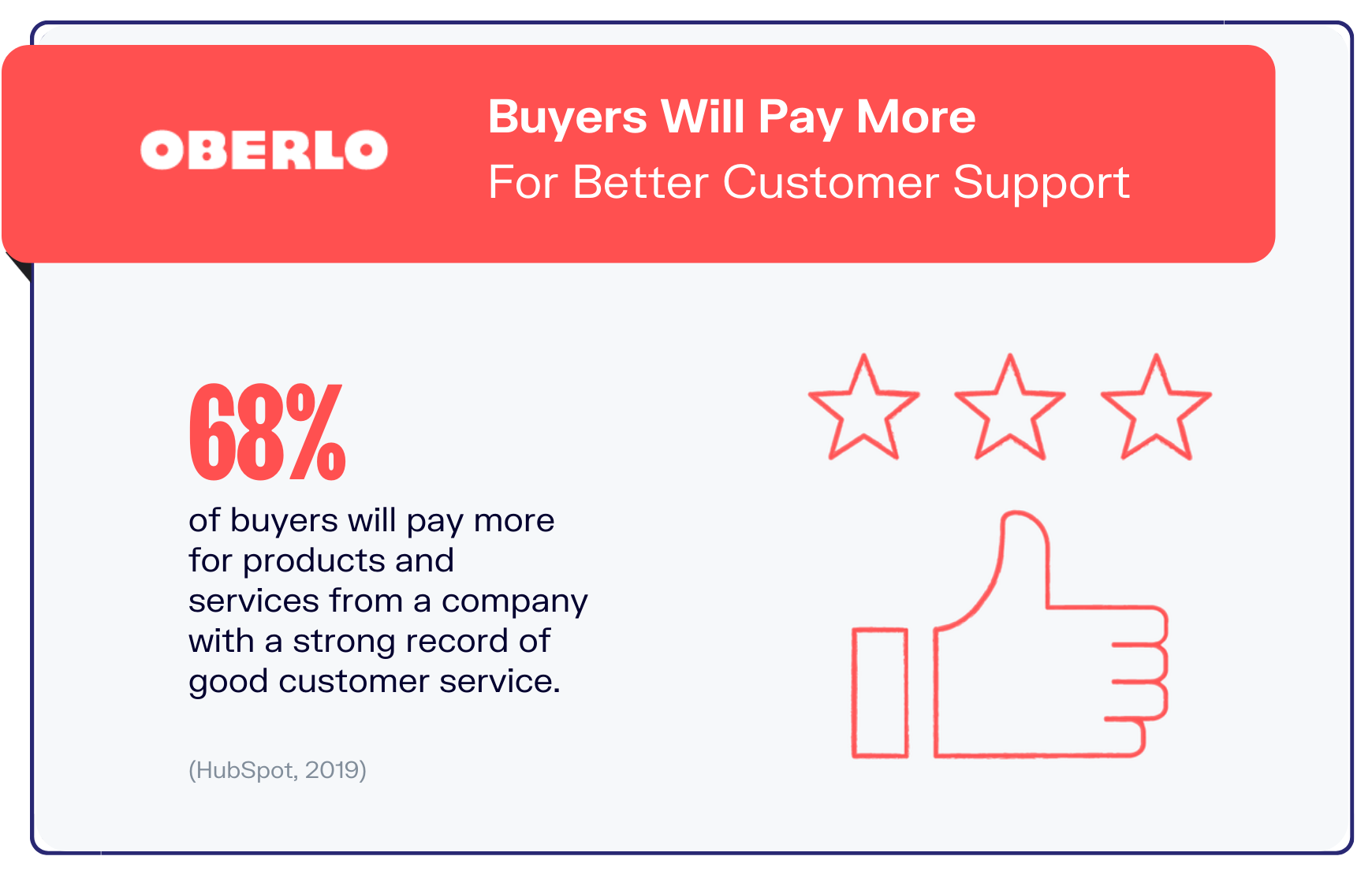
If you offer good customer service, there’s more margin for profit as you can afford to raise your prices a little. Here’s a statistic to back that up: 68 percent of consumers say they are willing to fork out more for products and services from a brand that’s known to offer good customer service experiences (HubSpot, 2019).
This is to be considered alongside the growing expectations of consumers – 46 percent of consumers surveyed say they expect more from customer service than the previous year. Among their growing demands are quicker and more efficient problem resolutions, not having to repeat themselves, and a fluid process irrespective of the contact channel.
To really attend to the needs of your customers, also keep in mind common complaints such as being treated like cases instead of human beings and getting contradictory responses when dealing with different representatives.
Conclusion
We hope that these customer service statistics have given you a better idea of its importance and how to go about implementing the best-ever customer service experience for your consumers.
Given the emphasis that consumers these days are placing on good customer service, this is certainly something your business must excel at.
If you already have customer service in place and have just been inspired to go the extra mile, take a look at some of these great customer service ideas!

Summary: Customer Service Statistics
Here’s a summary of the Customer Service Statistics you need to know in 2023:
- The customer experience management market worldwide is worth $11.34 billion in 2022.
- 81 percent of consumers say a positive customer service experience increases the chances of them making another purchase.
- 94 percent of customers say they’re more likely to continue purchasing from the same brand after a positive customer service experience.
- Despite the availability of automated solutions, 36 percent of consumers still prefer to wait to interact with a real person.
- 61 percent of consumers would switch to a competitor after just one poor customer service experience.
- More than half of consumers say automated telephone systems are the worst part of poor customer service.
- One-third of customers list the most important aspect of a good customer service experience as being able to resolve their problems in one sitting.
- Six in ten consumers say they share bad shopping experiences with others.
- 59 percent of consumers prefer to reach customer support via phone calls.
- 68 percent of consumers are willing to pay more to have better customer service experiences.



Want to Learn More?
- BigCommerce vs Shopify: Which One Is Better?
- WooCommerce vs. Shopify: Which Is the Better?
- Customer Loyalty Programs: How Brands Grow By Giving
- How to Start an Online Business: 10 Easy Steps
Is there anything else you’d like to know about customer service statistics and wish was included in this article? Let us know in the comments below!
